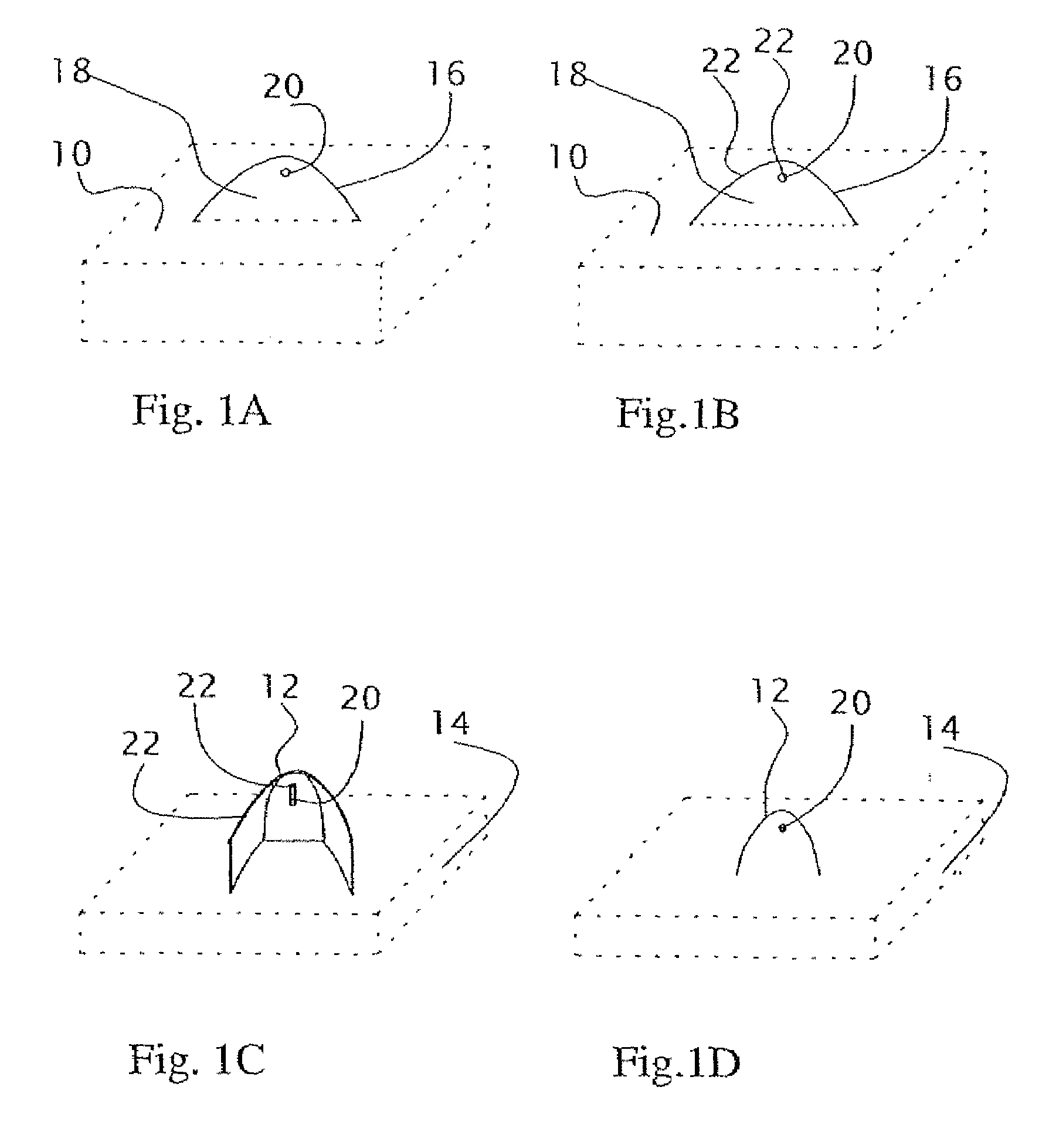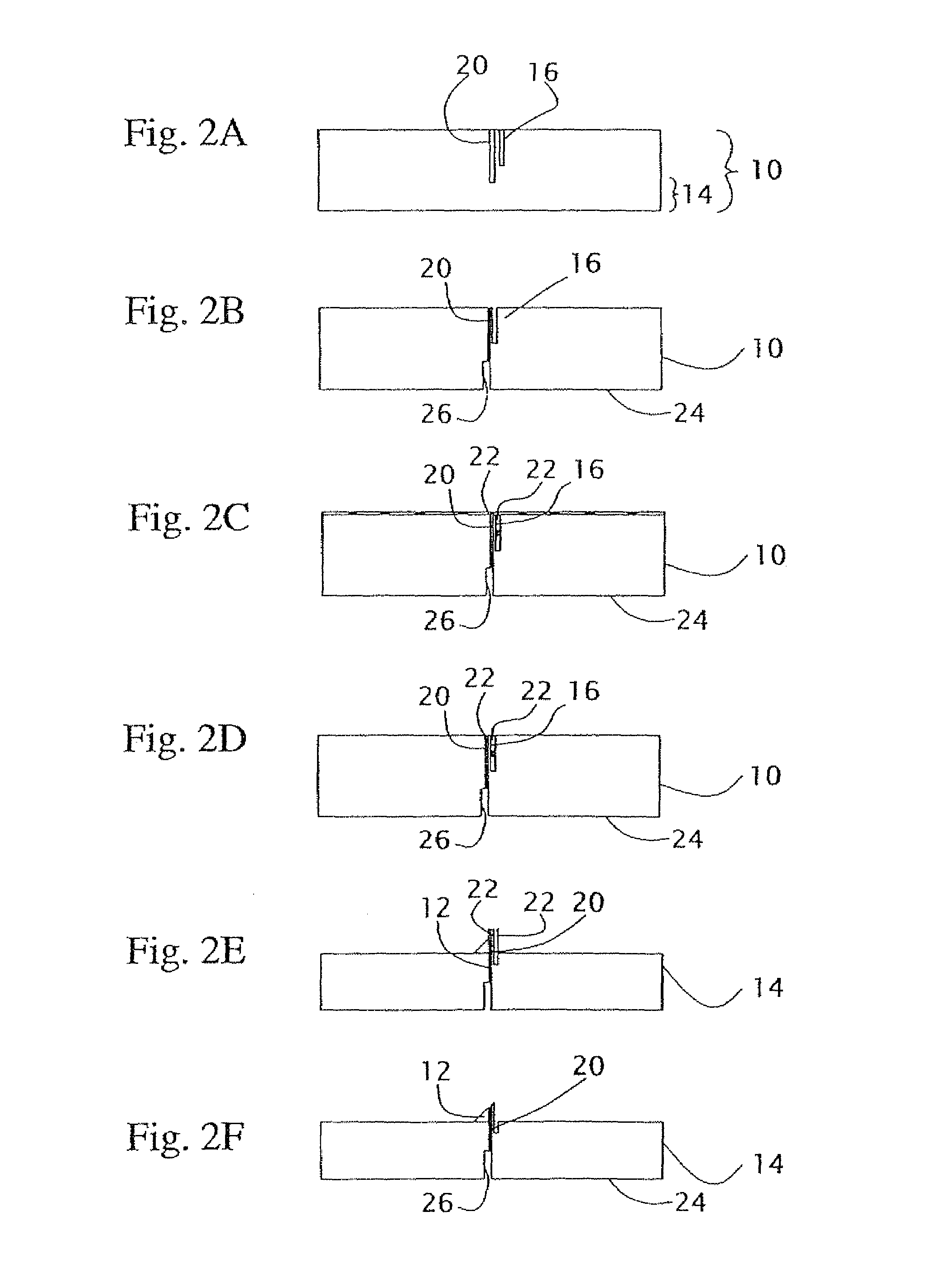Microneedle structure and production method therefor
a microneedle and production method technology, applied in the direction of liquid/fluent solid measurement, other medical devices, intravenous devices, etc., can solve the problems of reducing the effectiveness of the structure, and affecting the effect of the structur
- Summary
- Abstract
- Description
- Claims
- Application Information
AI Technical Summary
Benefits of technology
Problems solved by technology
Method used
Image
Examples
Embodiment Construction
[0036]The present invention is a method for producing hollow microneedles using a sequence of dry and wet etching techniques, and a hollow microneedle structure produced by such techniques.
[0037]The principles and operation of production techniques and the resulting structures according to the present invention may be better understood with reference to the drawings and the accompanying description.
[0038]Turning now to the drawings, FIGS. 1A-1D and 2A-2F illustrate schematically a method for processing a wafer 10 to form a plurality of hollow microneedles 12 projecting from a substrate 14.
[0039]Generally speaking, the method first employs a dry etching process to form a plurality of groups of recessed features, each group of recessed features including at least one slot 16 deployed to form an open shape having an included area 18 and at least one hole 20 located within included area 18. One such group of features is shown in FIGS. 1A and 2A.
[0040]Internal surfaces of holes 20 and sl...
PUM
| Property | Measurement | Unit |
|---|---|---|
| angle | aaaaa | aaaaa |
| angle | aaaaa | aaaaa |
| angle | aaaaa | aaaaa |
Abstract
Description
Claims
Application Information
 Login to View More
Login to View More - R&D
- Intellectual Property
- Life Sciences
- Materials
- Tech Scout
- Unparalleled Data Quality
- Higher Quality Content
- 60% Fewer Hallucinations
Browse by: Latest US Patents, China's latest patents, Technical Efficacy Thesaurus, Application Domain, Technology Topic, Popular Technical Reports.
© 2025 PatSnap. All rights reserved.Legal|Privacy policy|Modern Slavery Act Transparency Statement|Sitemap|About US| Contact US: help@patsnap.com



